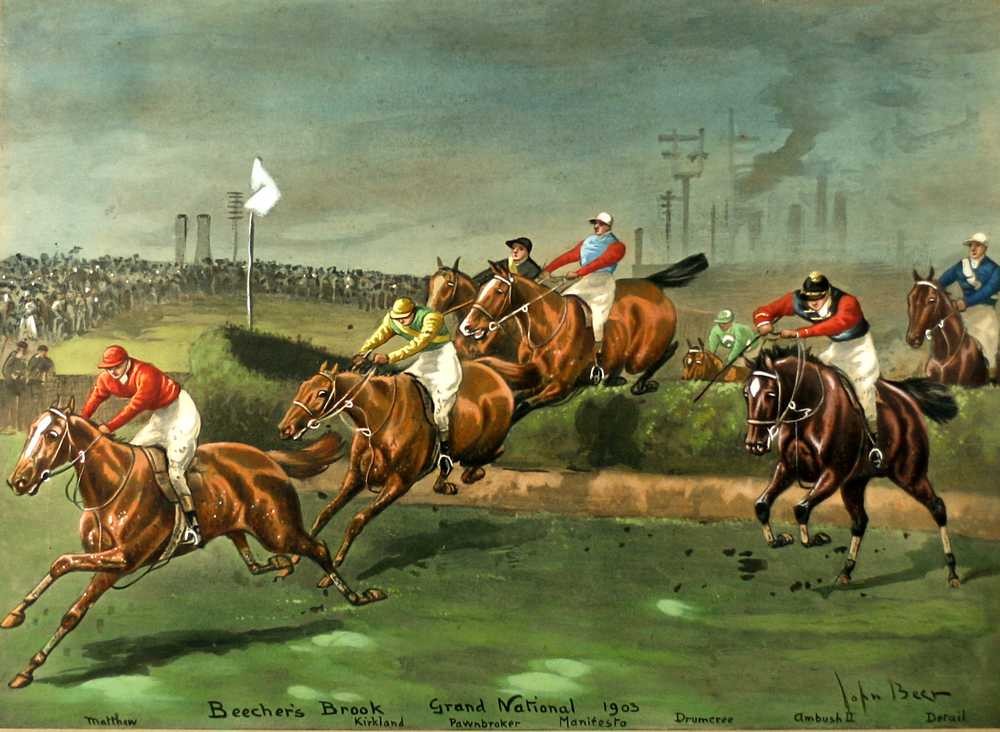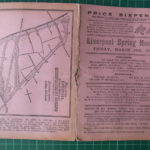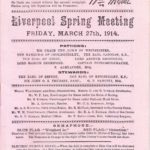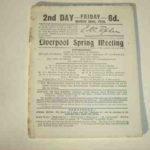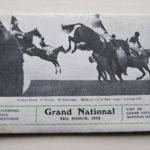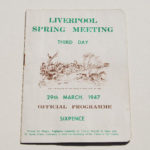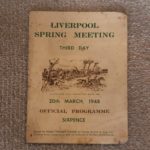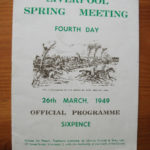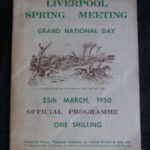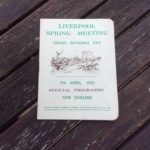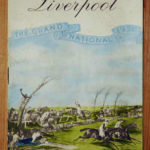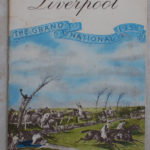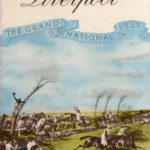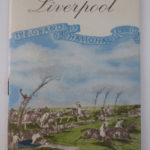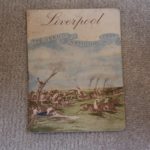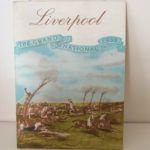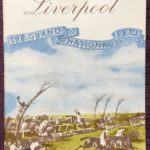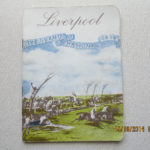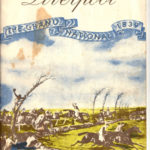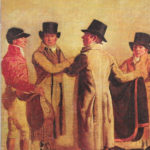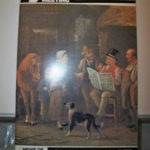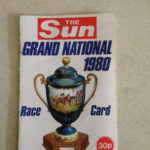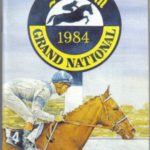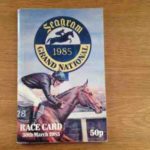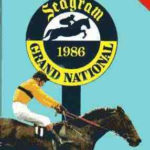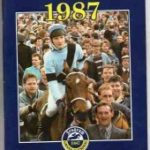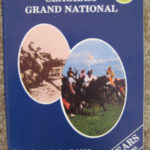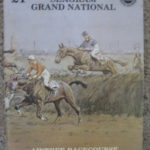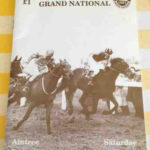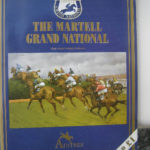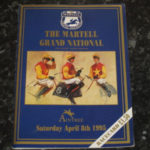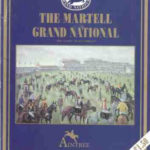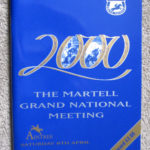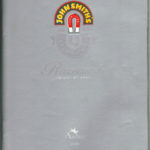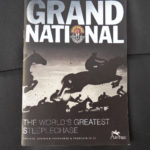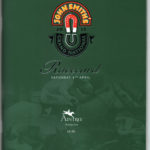Nineteenth Century Grand Nationals
Officially, the first Grand National was staged in 1839 and was won by the appropriately named Lottery. This is disputed, however. There were three races prior to this, given the name of Great Liverpool Steeplechase, that took place between 1836 and 1838. It had been believed that these races were run at a racecourse at nearby Maghull but recent research suggests they did in fact take place at Aintree.
In 1836 and 1837, the race was won by The Duke, ridden by Captain Martin Becher, after whom the famous fence Becher’s Brook is named. Sir William was the winner in 1838. These three races are believed to have been originally considered to have been Grand Nationals up until the 1860s. As new evidence has come to light, there have been moves to reinstate these races into official Grand National records. The 1839 race currently remains the official first Grand National.
It could also be argued that the first true Grand National took place in 1843, as this was the first time the race was run as a handicap. Prior to this, the race had been run as a weight for age, conditions event. The winner was Vanguard, carrying 8st 10lbs. All other runners carried at least 11st and up to 13st 6lbs.
In 1851, the diminutive Abd-El-Kader became the first dual winner of the race (discounting The Duke, 1836/1837). The horse was so unconsidered as to be unquoted by bookmakers for his first win in 1850. In 1853, Peter Simple also won his second Grand National at the age of 15 years. He had first won the race in 1849. He remains to this day the oldest ever winner of the race. Emblem (1863) and Emblematic (1864) were full-sisters winning the race in consecutive years. The Lamb became the first grey horse to win the race in 1868.
The nineteenth century came to a close with a second win in the race for one of the most successful Grand National performers of all time, Manifesto. Manifesto would run in the Grand National a total of eight times between 1895 and 1904, winning twice and placing a further four times.
Grand Nationals Pre-World War One
The new century started with a royal winner as Ambush II, owned by the Prince Of Wales (later to become King Edward VII), beat Barsac and the heavily weighted Manifesto. The following decade would see the one-eyed Glenside win the race in 1911 before the First World War broke out and the running of the race was transferred to Gatwick Racecourse between 1916-1918. Although the course was purpose built and maintained the same distance, these three races are sometimes not considered to be Grand Nationals and as such are excluded from some records of the race. The race took place under the name of The Racecourse Association Steeplechase and latterly War National Steeplechase. In 1918, the race was won by Poethlyn, ridden by Ernie Piggott, grandfather of legendary Lester Piggott. The pair would repeat the feat in 1919, back at Aintree, when Poethlyn scored at odds of 11/4 – the shortest starting odds of any Grand National winner to date.
The 1920s would see two consecutive 100/1 winners of the race, in 1928 and 1929. In 1928, the track was riding heavy and the race took place in mist. When Easter Hero fell at the Canal Turn fence, only 7 of the 42 starters emerged from the gloom with jockeys still in the saddle. Tipperary Tim was the only horse to finish the race without falling, although Billy Barton was remounted to become the only other finisher. Gregalach’s win in 1929 holds the record for the greatest number of starters as 66 competitors lined up but only 10 would complete the course. Easter Hero, the cause of so much chaos in the previous year, would finish second.
Grand National in the 1930s
Golden Miller, regarded by some as the greatest steeplechaser of all time, was the story of the 1930s. Having completed no less than five wins in the Cheltenham Gold Cup, Golden Miller added a Grand National victory to his remarkable race record, winning the race in 1934. He remains the only horse to ever win both the Cheltenham Gold Cup and Grand National in the same season.
Reynoldstown became the first back-to-back winner of the race since Poethlyn, winning the race in 1935 and 1936. Battleship became the second American horse (following Sergeant Murphy, 1923) to win the race in 1938. A son of the famous Man o’ War, he is also the only horse to have won both the Grand National and the American Grand National. His jockey, Bruce Hobbs, became the youngest jockey ever to win the race, aged 17 years.
Grand National in the 1940s
The Grand National in the 1940s was interrupted by the Second World War, with no race taking place between 1940-1945 as the racecourse was taken over by the military. 1947 produced another 100/1 winner in Caughoo, contributed to by another huge field of 57 participants. Sheila’s Cottage in 1948 became the first mare to win the race since Shannon Lass in 1902.
Grand National in the 1950s
The 1950s witnessed a remarkable training feat by Irish trainer, Vincent O’ Brien. He produced three consecutive winners of the race in Early Mist (1953), Royal Tan (1954) and Quare Times (1955). The 1956 Grand National would see one of the most famous moments in the history of the race. Devon Loch, owned by Queen Elizabeth The Queen Mother and ridden by future novelist Dick Francis were just yards from seemingly certain victory when the horse suddenly and for no apparent reason, jumped into the air and then belly-flopped on the ground and was unable to complete the race. E.S.B went on to win. Nickel Coin (1951) became the last mare to win the race.
Grand National in the 1960s
Nicolaus Silver became only the second grey horse and the first in 90 years to win the Grand National since The Lamb (1868 and 1871) when achieving the feat in 1961. Jay Trump (1965) became the first horse to win both The National and the Maryland Hunt Cup, repeated only by Ben Nevis II who would win the Grand National in 1980. The story of the decade though came with 100/1 winner Foinavon in 1967. Foinavon was some way adrift of the majority of the field when the riderless Popham Down who had parted with his jockey at the first fence suddenly veered across the the leading group of horses on the approach to the 23rd fence, causing them to unseat their rider, refuse to jump or have insufficient momentum to clear the fence. Out of the ensuing melee, Foinavon was able to circumvent the trouble and was left a considerable distance ahead of any pursuer, including 17 remounted horses. Although they closed the gap, none was able to catch Foinavon before he crossed the winning line. On the previous day, a two year old horse, Red Rum made his debut at Aintree, dead-heating for first place in a 5 furlong flat race.
The Red Rum Era
Two horses dominated the Grand Nationals of the 1970’s, L’Escargot and Red Rum. The former was a top class horse, having won the Cheltenham Gold Cup in consecutive seasons, in 1970 and 1971. He defeated Red Rum in the 1975 Grand National, preventing a third consecutive victory for the Aintree favourite. L’Escargot had also finished third in the 1973 Grand National and runner-up in the 1974 renewal. Red Rum would of course go on to become the only horse to date to complete a third Grand National victory, winning the race in 1977, following another second place finish in 1976. The 1973 Grand National is perhaps the one that is best remembered however as this was the race in which Red Rum came from being 15 lengths adrift at the last fence to overhaul the Richard Pitman ridden Crisp, who was conceding 23lbs, in the dying strides. Crisp was best known as a two-miler, having won the Champion Chase at Cheltenham over that distance and his effort over 4.5 miles, conceding weight to Red Rum, must go down as one of the best efforts in defeat in the history of the race.
Grand National in the 1980s
A true fairy tale came to fruition in 1981, as Bob Champion who had recovered from testicular cancer partnered Aldaniti who had himself recovered from lameness, to win the race. The story of the pair was the theme for the move, “Champions”. 1982 saw amateur Dick Saunders become the oldest jockey to win the race at the age of 48 on board Grittar. This was also the year that Geraldine Rees would become the first female rider to complete the course. The following year, 1983, would see another lady, Jenny Pitman become the first female trainer to win, with Corbiere. 1986 would see a victory for another Aintree favourite, West Tip. The horse who was fortunate to survive a clash with a lorry in 1982 ran in six consecutive Nationals from 1985 to 1990, adding two further places to his win.
Grand National in the 1990s
The high-class Mr Frisk would open the 1990s by recording the fastest time in the history of the race. The 1993 race was dubbed, “the greatest disaster in the history of the Grand National” by commentator Peter O’Sullevan after 30 of the 39 jockeys failed to notice that a false start had been called and completed the course. Esha Ness ‘won’ the race which was inevitably declared void. The 1997 Grand National was postponed following the evacuation of the racecourse due to receiving a coded bomb threat from the Provisional IRA. The race was held two days later on the Monday and was won by Lord Gyllene.
Twenty-First Century Grand Nationals
Ginger McCain would return to the winners enclosure in 2004 as the trainer of the great Red Rum secured his fourth success in the race, this time with Amberleigh House. This makes him the trainer to have gained the most wins to date, four. Mon Mome became the fifth horse to score at odds of 100/1 when taking the 2009 Grand National and the first to do so in more than 40 years. We also saw the first grey in more than 50 years (and only the third in history) to win the race when the french-bred Neptune Collonges scored in 2012. The horse would go on to have a career in dressage.

